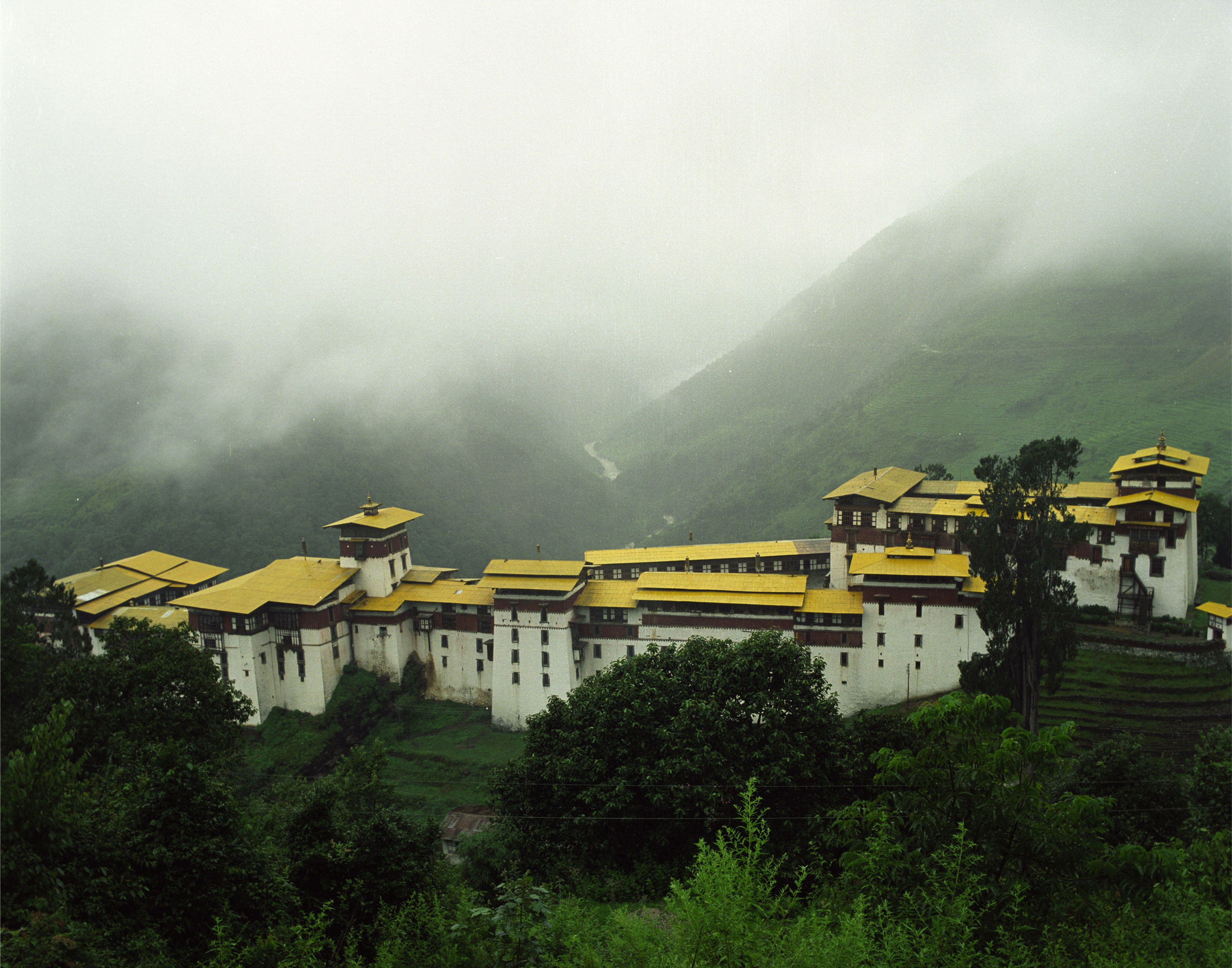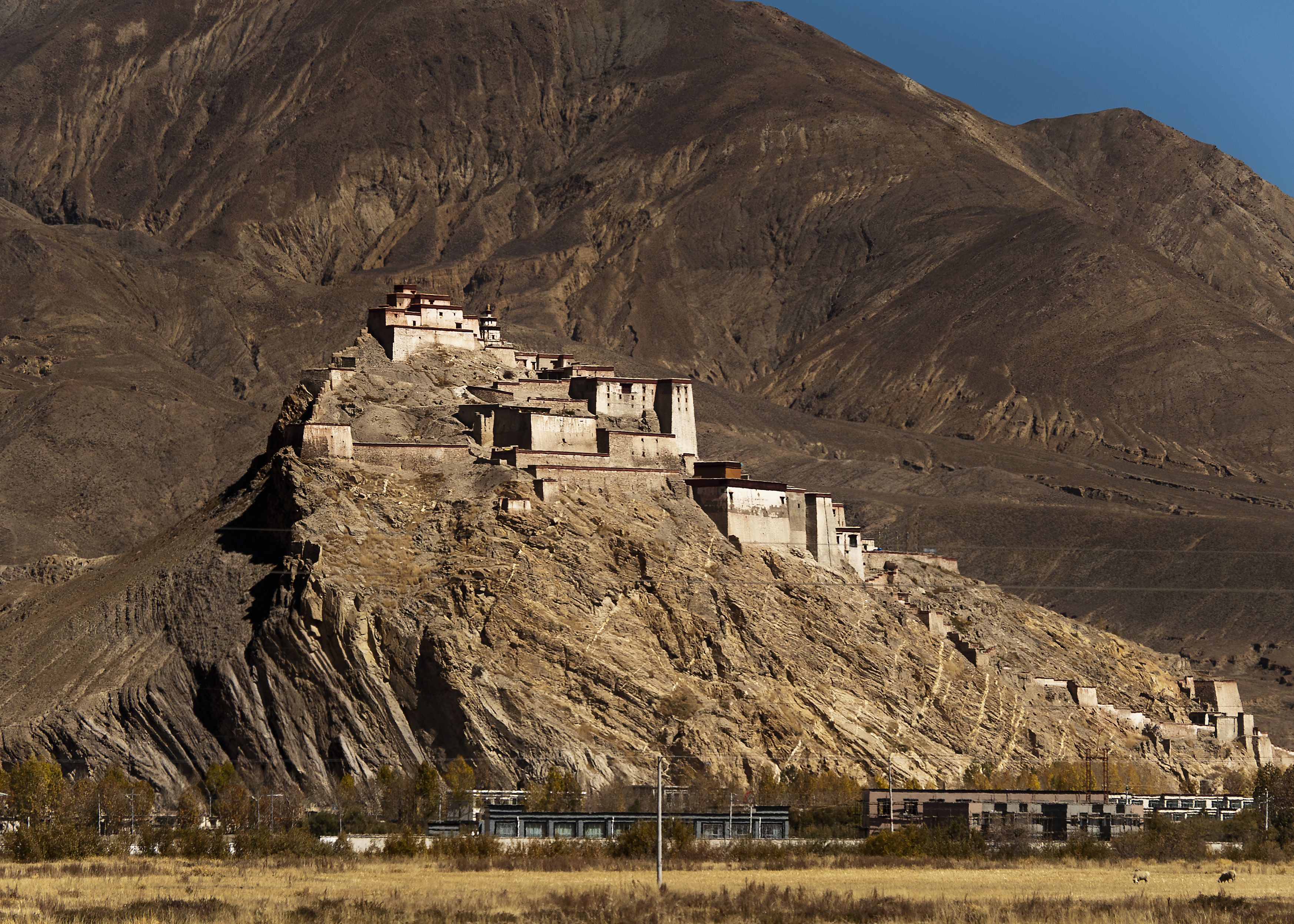|
Tongsa
Trongsa, previously Tongsa (, ), is a Thromde or town, and the capital of Trongsa District in central Bhutan. The name means "new village" in Dzongkha. The first temple was built in 1543 by the Drukpa lama Ngagi Wangchuck, who was the great-grandfather of Ngawang Namgyal, Zhabdrung Rinpoche, the unifier of Bhutan. Trongsa Dzong Chökhor Raptentse Dzong at Trongsa which was built in 1644, used to be the seat of power of the Wangchuck dynasty before it became rulers of Bhutan in 1907. Traditionally the King of Bhutan first becomes the Trongsa Penlop (governor) before being named Crown Prince and eventually King. Built on a mountain spur high above the gorges of the Mangde Chhu, the dzong controlled east-west trade for centuries. The only road connecting eastern and western Bhutan (the precursor to the modern Lateral Road), passed through the courtyard of the dzong. At the command of the ''penlop'' the massive doors could be shut, dividing the country in two. Higher yet ... [...More Info...] [...Related Items...] OR: [Wikipedia] [Google] [Baidu] |
Penlop
Penlop (Dzongkha: དཔོན་སློབ་; Wylie transliteration, Wylie: ''dpon-slob''; also spelled Ponlop, Pönlop) is a Dzongkha term roughly translated as provincial governor. Bhutanese penlops, prior to unification, controlled certain districts of the country, but now hold no administrative office. Rather, penlops are now entirely subservient to the House of Wangchuck. Traditionally, Bhutan comprised nine provinces: Trongsa Province, Trongsa, Paro Province, Paro, Punakha Province, Punakha, Wangdue Phodrang Province, Wangdue Phodrang, Daga Province, Daga (also Taka, Tarka, or Taga), Bumthang Province, Bumthang, Thimphu Province, Thimphu, Kurtoed Province, Kurtoed (also Kurtoi, Kuru-tod), and Kurmaed Province, Kurmaed (or Kurme, Kuru-mad). The Provinces of Kurtoed and Kurmaed were combined into one local administration, leaving the traditional number of governors at eight. While some lords were penlops, others held the title Dzongpen (Dzongkha: རྗོང་དཔོན ... [...More Info...] [...Related Items...] OR: [Wikipedia] [Google] [Baidu] |
Penlop Of Trongsa
The Penlop of Trongsa (; ), also called Chhoetse Penlop (Dzongkha: ཆོས་རྩེ་དཔོན་སློབ་; Wylie: ''Chos-rtse dpon-slob''; also spelled "Chötse"),The spelling of this title varies widely in sources because transliterations of Tibetan script and transcriptions of Tibetan phonology differ. ''Penlop'' may be spelled "pönlop" or "ponlop". ''Trongsa'' may appear as "Tongsa" or even "(b)Krongsa". ''Chotse'' may alternatively appear as "Chhotse", "Ch(h)oetse" or "Ch(h)ötse". Any combination of these variations may also contain additional hyphens or differing capitalization. is a Dzongkha title meaning "Governor of the Province of Trongsa (Chhoetse)". It is now generally given to the heir apparent of the Kingdom of Bhutan, but historically was an important title, for the governor of Trongsa and the surrounding area, and was the route by which the House of Wangchuck came to the throne. The most recent holder of the title was King Jigme Khesar Namgyel ... [...More Info...] [...Related Items...] OR: [Wikipedia] [Google] [Baidu] |
Trongsa Province
Trongsa Province ( Dzongkha: ཀྲོང་གསར་; Wylie: ''krong-gsar'') was one of the nine historical Provinces of Bhutan. Trongsa Province occupied lands in central Bhutan corresponding somewhat to modern Trongsa District, although the power of the Trongsa Penlop extended far beyond his own realms, covering the entire east of Bhutan. The province was administered from the Trongsa Dzong in the town of Trongsa, and its ruling governor was known as the Penlop of Trongsa, or Tongsab. History Under Bhutan's early theocratic dual system of government, decreasingly effective central government control resulted in the '' de facto'' disintegration of the office of Shabdrung after the death of ''Shabdrung'' Ngawang Namgyal in 1651. Under this system, the Shabdrung reigned over the temporal Druk Desi and religious Je Khenpo. Two successor Shabdrungs – the son (1651) and stepbrother (1680) of Ngawang Namgyal – were effectively controlled by the Druk Desi and Je Khe ... [...More Info...] [...Related Items...] OR: [Wikipedia] [Google] [Baidu] |
House Of Wangchuck
The Wangchuck dynasty () have held the hereditary position of Druk Gyalpo ("Dragon King") of Bhutan since 1907. Prior to reunification, the Wangchuck family had governed the district of Trongsa as descendants of Dungkar Choji. They eventually overpowered other regional lords and earned the favour of the British Empire. After consolidating power, the 12th Penlop of Trongsa ''Gongsar'' Ugyen Wangchuck was elected Druk Gyalpo, thus founding the dynasty. The position of Druk Gyalpo – who heads the royal family of Bhutan – is more commonly known in English as the King of Bhutan, however "Druk Gyalpo" would be translated literally as "Dragon King" (or less commonly, "King of the Dragons", or "Thunder Dragon King") The Wangchuck dynasty ruled government power in Bhutan and established relations with the British Empire and India under its first two monarchs. The third, fourth, and fifth (current) monarchs have put the kingdom on its path toward democratization, decentralization, ... [...More Info...] [...Related Items...] OR: [Wikipedia] [Google] [Baidu] |
Dzong
Dzong architecture is used for dzongs, a distinctive type of fortified monastery (, , ) architectural style, architecture found mainly in Bhutan and Tibet. The architecture is massive in style with towering exterior walls surrounding a complex of courtyards, temples, administrative offices, and monks' accommodation. Characteristics Distinctive features include: * High inward sloping walls of brick and stone painted white with few or no windows in the lower sections of the wall * Use of a surrounding red ochre stripe near the top of the walls, sometimes punctuated by large gold circles * Use of unique style flared roofs atop interior temples * Massive entry doors made of wood and iron * Interior courtyards and temples brightly colored in Buddhist-themed art Motif (visual arts), motifs such as the ashtamangala or swastika Regional differences Bhutan Dzongs serve as the religious, military, administrative, and social centers of their district. They are often the site of an annual ' ... [...More Info...] [...Related Items...] OR: [Wikipedia] [Google] [Baidu] |
Bhutan
Bhutan, officially the Kingdom of Bhutan, is a landlocked country in South Asia, in the Eastern Himalayas between China to the north and northwest and India to the south and southeast. With a population of over 727,145 and a territory of , Bhutan ranks List of countries and dependencies by area, 133rd in land area and List of countries and dependencies by population, 160th in population. Bhutan is a Democracy, democratic constitutional monarchy with a King of Bhutan, King as the head of state and a Prime Minister of Bhutan, prime minister as the head of government. The Je Khenpo is the head of the state religion, Vajrayana Buddhism. The Himalayas, Himalayan mountains in the north rise from the country's lush subtropical plains in the south. In the Mountains of Bhutan, Bhutanese Himalayas, there are peaks higher than above sea level. Gangkhar Puensum is Bhutan's highest peak and is the highest unclimbed mountain in the world. The wildlife of Bhutan is notable for its diversi ... [...More Info...] [...Related Items...] OR: [Wikipedia] [Google] [Baidu] |
Thromde
A Thromde (Dzongkha: ཁྲོམ་སྡེ་; Wylie: ''khrom-sde'') is a second-level administrative division in Bhutan. The legal administrative status of thromdes was most recently codified under the Local Government Act of 2009, and the role of thromdes in elections in Bhutan was defined in the Election Act of 2008. Governance Thromde administration is a product of the Bhutanese program of decentralization and devolution of power and authority. Thromdes are administered independently by a Thromde Tshogde if sufficiently developed and populated (Class A Thromdes); or directly by Dzongkhag Administration or the Gewog Administration as decided by the Government (Class B Thromdes and Yenlag Thromdes). From time to time, Parliament decides the boundaries of Thromde in consultation with the National Land Commission Secretariat and local authorities. Each Thromde Tshogde is composed of seven to ten elected members and headed by a Thrompon. Thromde Tshogdes are empowered to r ... [...More Info...] [...Related Items...] OR: [Wikipedia] [Google] [Baidu] |
Trongsa Dzong
Trongsa Dzong is the largest dzong fortress in Bhutan, located in Trongsa (formerly Tongsa) in Trongsa district, in the centre of the country. Built on a spur overlooking the gorge of the Mangde River, a temple was first established at the location in 1543 by the Drukpa Lineage, Drukpa lama, Nagi Wangchuk son of Ngawang Chhojey. In 1647, his great-grandson Ngawang Namgyal, ''Shabdrung'' Ngawang Namgyal (Shabdrung or Zhabdrung being his title),Dorje (1999), p. 856. constructed the first dzong to replace it, called Chökhor Rabtentse Dzong with a shorter version of Choetse Dzong. It was enlarged several times during the 18th century; the Chenrezig Lhakang was built in 1715 and a whole complex, including the Maitreya (Jampa) temple, was added in 1771. The dzong has since been repaired on several occasions; it was damaged during the 1897 Assam earthquake and underwent extensive renovation in 1927 and 1999.Pommaret (2006), p.211. Trongsa Dzong, the largest dzong at a striking location, ... [...More Info...] [...Related Items...] OR: [Wikipedia] [Google] [Baidu] |
Mangde Chhu
Mangde Chhu or Tongsa river flows in central Bhutan traversing roughly north–south. The river rises in Wangdue Phodrang district (or dzongkhag in Dzongkha), near Gangkhar Puensum, Bhutan's highest peak at . Bhutan's main east–west highway crosses the Mangde Chhu about west of Trongsa. South of Trongsa, the river drains the eastern slopes of the Black Mountains (Bhutan), and forms the eastern boundaries of Black Mountain National Park and Royal Manas National Park. Another highway follows the river south from Trongsa to Shemgang. The highway leaves the river at Tingtinbi, and eventually reaches the Indian border at Gelegphug. South of Tingtinbi, the Mangde is joined by the Bumthang River from the east, and is known as the Tongasa. Shortly before entering India in Assam, the Manas River flows into the river from the east, and the river exits Bhutan near Manas. Important towns and areas through which the Trongsa - Gelegphug road passes are Shemgang (Shamgong), Taama, ... [...More Info...] [...Related Items...] OR: [Wikipedia] [Google] [Baidu] |
Bhutan Cultural Atlas
The Bhutan Cultural Atlas (འབྲུག་གི་ལམ་སྲོལ་ས་ཁྲ།) is a web based cultural mapping initiative sponsored by the Royal University of Bhutan - College of Language and Culture Studies, the UNESCO The United Nations Educational, Scientific and Cultural Organization (UNESCO ) is a List of specialized agencies of the United Nations, specialized agency of the United Nations (UN) with the aim of promoting world peace and International secur ... World Heritage Centre and the Oriental Cultural Heritage Sites Protection Alliance (OCHSPA, France), aimed at helping to preserve Bhutan's intangible and tangible cultural assets. References External links * Culture of Bhutan {{Bhutan-stub ... [...More Info...] [...Related Items...] OR: [Wikipedia] [Google] [Baidu] |
National Center For Hydrology And Meteorology
The National Center for Hydrology and Meteorology () is the National Meteorological service of the Kingdom of Bhutan Bhutan, officially the Kingdom of Bhutan, is a landlocked country in South Asia, in the Eastern Himalayas between China to the north and northwest and India to the south and southeast. With a population of over 727,145 and a territory of , .... History The Center was established in January 2016 as per the recommendation of the Organization Development (OD) exercises carried out by the Royal Civil Service Commission (RCSC) in August 2014 to provide scientific and technical information and services related to weather, climate, cryosphere, meteorology, hydrology and water resources for line agencies and public. References External links NCHM homepage Governmental meteorological agencies in Asia 2016 establishments in Bhutan {{Bhutan-stub ... [...More Info...] [...Related Items...] OR: [Wikipedia] [Google] [Baidu] |





